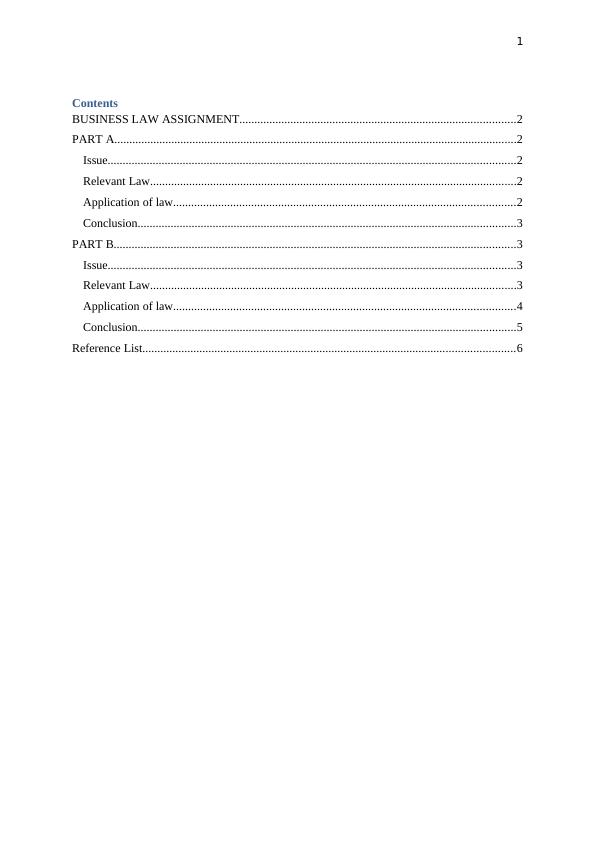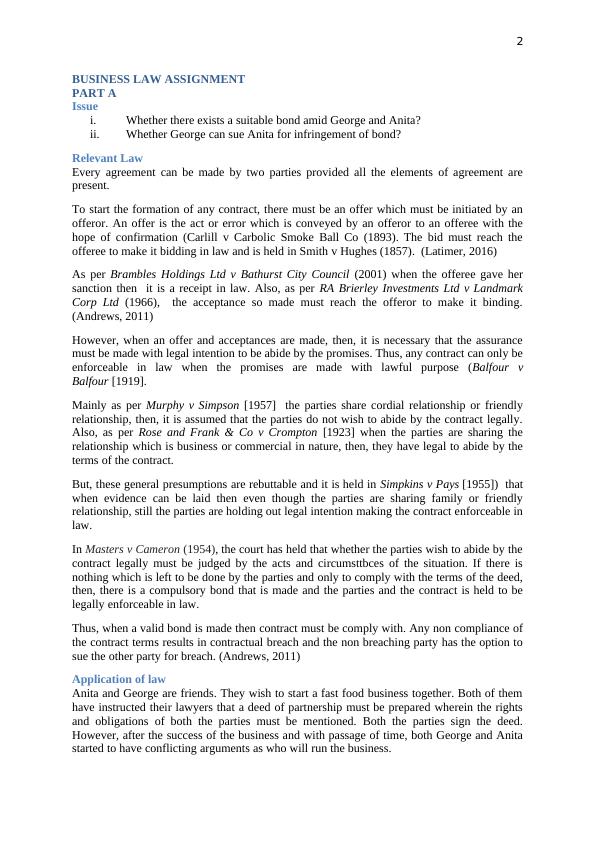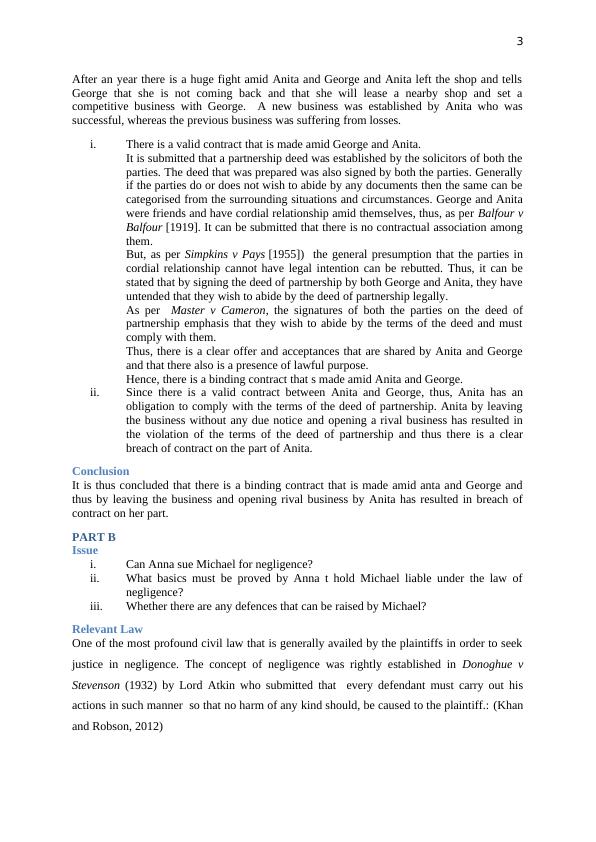Business Law Assignment: Validity of Contract and Negligence Law
Students are required to resolve two case problem type questions from a list of case problem questions provided from the prescribed textbook using IRAC method, based on topics discussed in lectures.
6 Pages2263 Words110 Views
Added on 2022-11-13
About This Document
This assignment discusses the validity of a contract between George and Anita and the possibility of suing for breach of contract. It also discusses the law of negligence and the possibility of Anna suing Michael for negligence.
Business Law Assignment: Validity of Contract and Negligence Law
Students are required to resolve two case problem type questions from a list of case problem questions provided from the prescribed textbook using IRAC method, based on topics discussed in lectures.
Added on 2022-11-13
ShareRelated Documents
End of preview
Want to access all the pages? Upload your documents or become a member.
Contract Law and Negligence Law: Case Analysis
|10
|1210
|412
Contract Law: Elements of Contract Formation and Application of Law
|7
|2105
|82
Legal Analysis of Contractual Issues in Wanda's Case
|7
|1932
|233
Contract Law and The Law of Negligence in Australia
|8
|2597
|359
Breach of Contract: Can Sunita Sue Her Uncle for Non-Compliance?
|5
|1709
|303
Contract Law: Elements of Contract Formation and Application of Law
|9
|2327
|446



